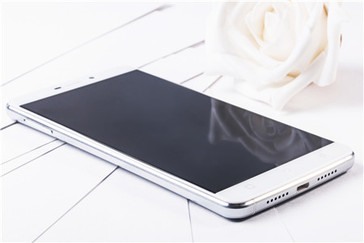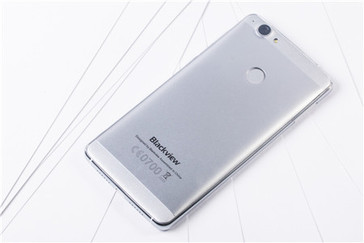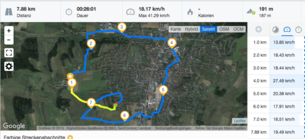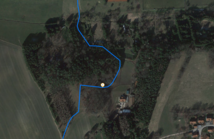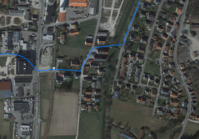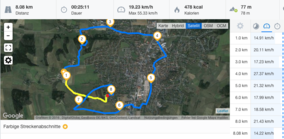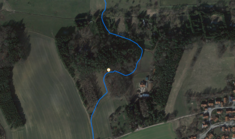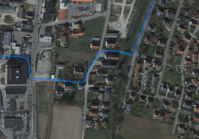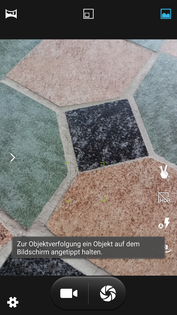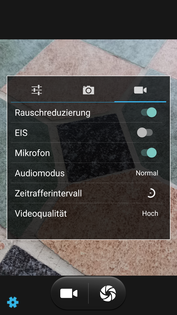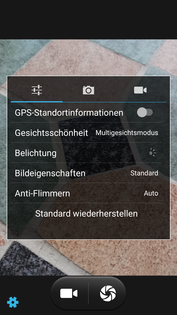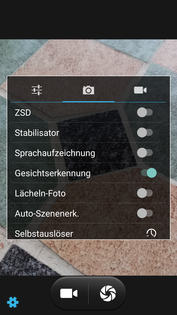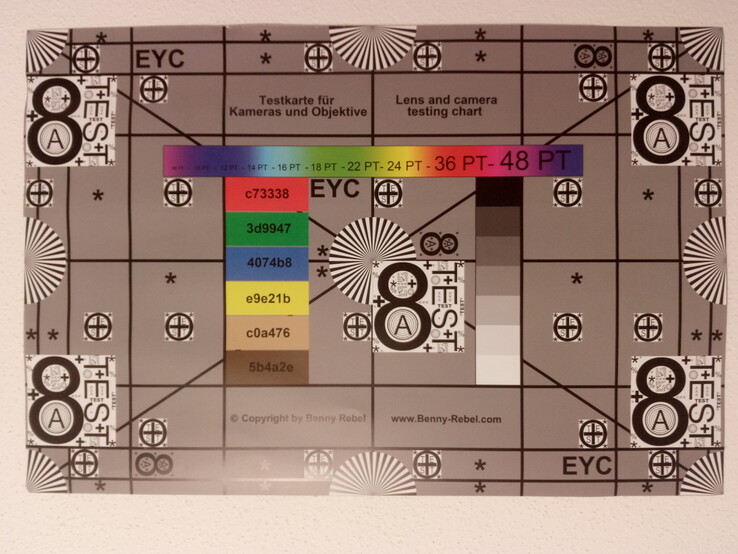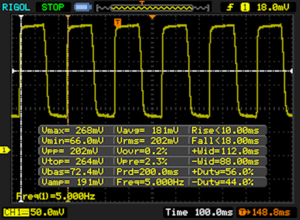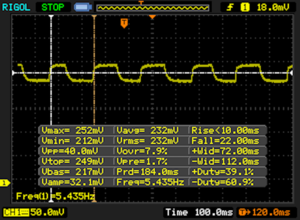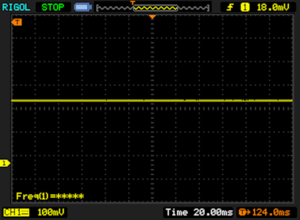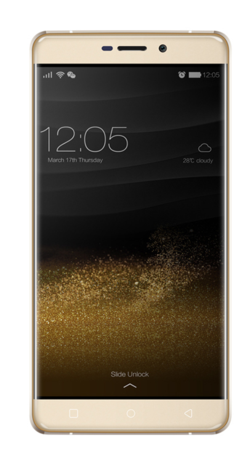Breve Análise do Smartphone Blackview R7
Os Top 10
» Os Top 10 Portáteis Multimídia
» Os Top 10 Portáteis de Jogos
» Os Top 10 Portáteis Leves para Jogos
» Os Top 10 Portáteis Acessíveis de Escritório/Empresariais
» Os Top 10 Portáteis Premium de Escritório/Empresariais
» Os Top 10 dos Portáteis Workstation
» Os Top 10 Subportáteis
» Os Top 10 Ultrabooks
» Os Top 10 Conversíveis
» Os Top 10 Tablets
» Os Top 10 Smartphones
» A melhores Telas de Portáteis Analisadas Pela Notebookcheck
» Top 10 dos portáteis abaixo dos 500 Euros da Notebookcheck
» Top 10 dos Portáteis abaixo dos 300 Euros
Size Comparison
| Networking | |
| iperf Server (receive) TCP 1 m | |
| Xiaomi Mi 5 | |
| Blackview R7 | |
| Honor 5C | |
| iperf Client (transmit) TCP 1 m | |
| Xiaomi Mi 5 | |
| Blackview R7 | |
| Honor 5C | |
| |||||||||||||||||||||||||
iluminação: 91 %
iluminação com acumulador: 552 cd/m²
Contraste: 863:1 (Preto: 0.64 cd/m²)
ΔE ColorChecker Calman: 11 | ∀{0.5-29.43 Ø4.78}
ΔE Greyscale Calman: 14.3 | ∀{0.09-98 Ø5}
Gamma: 2.21
CCT: 12996 K
| Blackview R7 IPS, 1920x1080, 5.5" | ZTE Blade V7 Lite IPS, 1280x720, 5" | Coolpad Torino S IPS, 1280x720, 4.7" | LG K10 IPS, 1280x720, 5.3" | Honor 5C IPS, 1920x1080, 5.2" | Xiaomi Mi 5 IPS, 1920x1080, 5.2" | |
|---|---|---|---|---|---|---|
| Screen | 25% | 12% | 18% | 22% | 36% | |
| Brightness middle (cd/m²) | 552 | 312 -43% | 360 -35% | 370 -33% | 515 -7% | 598 8% |
| Brightness (cd/m²) | 526 | 302 -43% | 358 -32% | 355 -33% | 498 -5% | 566 8% |
| Brightness Distribution (%) | 91 | 79 -13% | 87 -4% | 92 1% | 93 2% | 90 -1% |
| Black Level * (cd/m²) | 0.64 | 0.15 77% | 0.45 30% | 0.28 56% | 0.49 23% | 0.51 20% |
| Contrast (:1) | 863 | 2080 141% | 800 -7% | 1321 53% | 1051 22% | 1173 36% |
| Colorchecker dE 2000 * | 11 | 8.2 25% | 6.8 38% | 6.7 39% | 6.2 44% | 3.5 68% |
| Colorchecker dE 2000 max. * | 20.8 | 16.5 21% | 11.3 46% | 17.8 14% | 11.4 45% | 6.1 71% |
| Greyscale dE 2000 * | 14.3 | 9.2 36% | 6.2 57% | 7.9 45% | 7.4 48% | 3.5 76% |
| Gamma | 2.21 100% | 2.29 96% | 2.14 103% | 2.21 100% | 2.28 96% | 2.29 96% |
| CCT | 12996 50% | 9017 72% | 7975 82% | 9072 72% | 8664 75% | 6532 100% |
* ... menor é melhor
Exibir tempos de resposta
| ↔ Tempo de resposta preto para branco | ||
|---|---|---|
| 28 ms ... ascensão ↗ e queda ↘ combinadas | ↗ 10 ms ascensão | |
| ↘ 18 ms queda | ||
| A tela mostra taxas de resposta relativamente lentas em nossos testes e pode ser muito lenta para os jogadores. Em comparação, todos os dispositivos testados variam de 0.1 (mínimo) a 240 (máximo) ms. » 70 % de todos os dispositivos são melhores. Isso significa que o tempo de resposta medido é pior que a média de todos os dispositivos testados (20.2 ms). | ||
| ↔ Tempo de resposta 50% cinza a 80% cinza | ||
| 32 ms ... ascensão ↗ e queda ↘ combinadas | ↗ 10 ms ascensão | |
| ↘ 22 ms queda | ||
| A tela mostra taxas de resposta lentas em nossos testes e será insatisfatória para os jogadores. Em comparação, todos os dispositivos testados variam de 0.165 (mínimo) a 636 (máximo) ms. » 42 % de todos os dispositivos são melhores. Isso significa que o tempo de resposta medido é semelhante à média de todos os dispositivos testados (31.6 ms). | ||
Cintilação da tela / PWM (modulação por largura de pulso)
| Tela tremeluzindo / PWM não detectado | |||
[pwm_comparison] Em comparação: 53 % de todos os dispositivos testados não usam PWM para escurecer a tela. Se PWM foi detectado, uma média de 8111 (mínimo: 5 - máximo: 343500) Hz foi medida. | |||
| AndroBench 3-5 | |
| Sequential Write 256KB SDCard (classificar por valor) | |
| Blackview R7 | |
| ZTE Blade V7 Lite | |
| Coolpad Torino S | |
| LG K10 | |
| Honor 5C | |
| Sequential Read 256KB SDCard (classificar por valor) | |
| Blackview R7 | |
| ZTE Blade V7 Lite | |
| Coolpad Torino S | |
| LG K10 | |
| Honor 5C | |
| Random Write 4KB (classificar por valor) | |
| Blackview R7 | |
| ZTE Blade V7 Lite | |
| Coolpad Torino S | |
| LG K10 | |
| Honor 5C | |
| Xiaomi Mi 5 | |
| Random Read 4KB (classificar por valor) | |
| Blackview R7 | |
| ZTE Blade V7 Lite | |
| Coolpad Torino S | |
| LG K10 | |
| Honor 5C | |
| Xiaomi Mi 5 | |
| Sequential Write 256KB (classificar por valor) | |
| Blackview R7 | |
| ZTE Blade V7 Lite | |
| Coolpad Torino S | |
| LG K10 | |
| Honor 5C | |
| Xiaomi Mi 5 | |
| Sequential Read 256KB (classificar por valor) | |
| Blackview R7 | |
| ZTE Blade V7 Lite | |
| Coolpad Torino S | |
| LG K10 | |
| Honor 5C | |
| Xiaomi Mi 5 | |
| AnTuTu v6 - Total Score (classificar por valor) | |
| Blackview R7 | |
| ZTE Blade V7 Lite | |
| Coolpad Torino S | |
| LG K10 | |
| Honor 5C | |
| Xiaomi Mi 5 | |
| 3DMark | |
| 1280x720 offscreen Ice Storm Unlimited Score (classificar por valor) | |
| Blackview R7 | |
| ZTE Blade V7 Lite | |
| Coolpad Torino S | |
| LG K10 | |
| Honor 5C | |
| Xiaomi Mi 5 | |
| 1280x720 offscreen Ice Storm Unlimited Graphics Score (classificar por valor) | |
| Blackview R7 | |
| ZTE Blade V7 Lite | |
| Coolpad Torino S | |
| LG K10 | |
| Honor 5C | |
| Xiaomi Mi 5 | |
| 1280x720 offscreen Ice Storm Unlimited Physics (classificar por valor) | |
| Blackview R7 | |
| ZTE Blade V7 Lite | |
| Coolpad Torino S | |
| LG K10 | |
| Honor 5C | |
| Xiaomi Mi 5 | |
| 2560x1440 Sling Shot OpenGL ES 3.0 (classificar por valor) | |
| Blackview R7 | |
| ZTE Blade V7 Lite | |
| Coolpad Torino S | |
| LG K10 | |
| Honor 5C | |
| Xiaomi Mi 5 | |
| 2560x1440 Sling Shot OpenGL ES 3.0 Graphics (classificar por valor) | |
| Blackview R7 | |
| ZTE Blade V7 Lite | |
| Coolpad Torino S | |
| LG K10 | |
| Honor 5C | |
| Xiaomi Mi 5 | |
| 2560x1440 Sling Shot OpenGL ES 3.0 Physics (classificar por valor) | |
| Blackview R7 | |
| ZTE Blade V7 Lite | |
| Coolpad Torino S | |
| LG K10 | |
| Honor 5C | |
| Xiaomi Mi 5 | |
| GFXBench (DX / GLBenchmark) 2.7 | |
| T-Rex Onscreen (classificar por valor) | |
| Blackview R7 | |
| ZTE Blade V7 Lite | |
| Coolpad Torino S | |
| LG K10 | |
| Honor 5C | |
| Xiaomi Mi 5 | |
| 1920x1080 T-Rex Offscreen (classificar por valor) | |
| Blackview R7 | |
| ZTE Blade V7 Lite | |
| Coolpad Torino S | |
| LG K10 | |
| Honor 5C | |
| Xiaomi Mi 5 | |
| GFXBench 3.0 | |
| on screen Manhattan Onscreen OGL (classificar por valor) | |
| Blackview R7 | |
| ZTE Blade V7 Lite | |
| Coolpad Torino S | |
| LG K10 | |
| Honor 5C | |
| Xiaomi Mi 5 | |
| 1920x1080 1080p Manhattan Offscreen (classificar por valor) | |
| Blackview R7 | |
| ZTE Blade V7 Lite | |
| Coolpad Torino S | |
| LG K10 | |
| Honor 5C | |
| Xiaomi Mi 5 | |
| GFXBench 3.1 | |
| on screen Manhattan ES 3.1 Onscreen (classificar por valor) | |
| Blackview R7 | |
| ZTE Blade V7 Lite | |
| LG K10 | |
| Honor 5C | |
| Xiaomi Mi 5 | |
| 1920x1080 Manhattan ES 3.1 Offscreen (classificar por valor) | |
| Blackview R7 | |
| ZTE Blade V7 Lite | |
| LG K10 | |
| Honor 5C | |
| Xiaomi Mi 5 | |
| PCMark for Android - Work performance score (classificar por valor) | |
| Blackview R7 | |
| Coolpad Torino S | |
| LG K10 | |
| Honor 5C | |
| Xiaomi Mi 5 | |
| JetStream 1.1 - Total Score (classificar por valor) | |
| Blackview R7 | |
| ZTE Blade V7 Lite | |
| Coolpad Torino S | |
| LG K10 | |
| Honor 5C | |
| Xiaomi Mi 5 | |
| Octane V2 - Total Score (classificar por valor) | |
| Blackview R7 | |
| ZTE Blade V7 Lite | |
| Coolpad Torino S | |
| LG K10 | |
| Honor 5C | |
| Xiaomi Mi 5 | |
| Mozilla Kraken 1.1 - Total (classificar por valor) | |
| Blackview R7 | |
| ZTE Blade V7 Lite | |
| Coolpad Torino S | |
| LG K10 | |
| Honor 5C | |
| Xiaomi Mi 5 | |
* ... menor é melhor
(+) A temperatura máxima no lado superior é 39 °C / 102 F, em comparação com a média de 35.2 °C / 95 F , variando de 21.9 a 247 °C para a classe Smartphone.
(±) A parte inferior aquece até um máximo de 41.8 °C / 107 F, em comparação com a média de 34 °C / 93 F
(+) Em uso inativo, a temperatura média para o lado superior é 31 °C / 88 F, em comparação com a média do dispositivo de 32.9 °C / ### class_avg_f### F.
Blackview R7 análise de áudio
(±) | o volume do alto-falante é médio, mas bom (###valor### dB)
Graves 100 - 315Hz
(-) | quase nenhum baixo - em média 30.5% menor que a mediana
(-) | graves não são lineares (15.5% delta para frequência anterior)
Médios 400 - 2.000 Hz
(±) | médios reduzidos - em média 9.8% menor que a mediana
(-) | médios não são lineares (15.2% delta para frequência anterior)
Altos 2 - 16 kHz
(±) | máximos mais altos - em média 11.7% maior que a mediana
(+) | os máximos são lineares (6.2% delta da frequência anterior)
Geral 100 - 16.000 Hz
(-) | o som geral não é linear (44.4% diferença em relação à mediana)
Comparado com a mesma classe
» 87% de todos os dispositivos testados nesta classe foram melhores, 0% semelhantes, 13% piores
» O melhor teve um delta de 11%, a média foi 35%, o pior foi 134%
Comparado com todos os dispositivos testados
» 95% de todos os dispositivos testados foram melhores, 0% semelhantes, 4% piores
» O melhor teve um delta de 4%, a média foi 24%, o pior foi 134%
ZTE Blade V7 Lite análise de áudio
(+) | os alto-falantes podem tocar relativamente alto (###valor### dB)
Graves 100 - 315Hz
(-) | quase nenhum baixo - em média 35.5% menor que a mediana
(±) | a linearidade dos graves é média (7% delta para a frequência anterior)
Médios 400 - 2.000 Hz
(±) | médios reduzidos - em média 5.1% menor que a mediana
(±) | a linearidade dos médios é média (8% delta para frequência anterior)
Altos 2 - 16 kHz
(+) | agudos equilibrados - apenas 2.2% longe da mediana
(+) | os máximos são lineares (2.2% delta da frequência anterior)
Geral 100 - 16.000 Hz
(±) | a linearidade do som geral é média (23.8% diferença em relação à mediana)
Comparado com a mesma classe
» 54% de todos os dispositivos testados nesta classe foram melhores, 9% semelhantes, 38% piores
» O melhor teve um delta de 11%, a média foi 35%, o pior foi 134%
Comparado com todos os dispositivos testados
» 70% de todos os dispositivos testados foram melhores, 6% semelhantes, 23% piores
» O melhor teve um delta de 4%, a média foi 24%, o pior foi 134%
Honor 5C análise de áudio
(+) | os alto-falantes podem tocar relativamente alto (###valor### dB)
Graves 100 - 315Hz
(-) | quase nenhum baixo - em média 30.9% menor que a mediana
(±) | a linearidade dos graves é média (8.1% delta para a frequência anterior)
Médios 400 - 2.000 Hz
(±) | médios mais altos - em média 7.1% maior que a mediana
(±) | a linearidade dos médios é média (8.8% delta para frequência anterior)
Altos 2 - 16 kHz
(±) | máximos mais altos - em média 12.1% maior que a mediana
(+) | os máximos são lineares (2.9% delta da frequência anterior)
Geral 100 - 16.000 Hz
(-) | o som geral não é linear (31.7% diferença em relação à mediana)
Comparado com a mesma classe
» 81% de todos os dispositivos testados nesta classe foram melhores, 2% semelhantes, 16% piores
» O melhor teve um delta de 11%, a média foi 35%, o pior foi 134%
Comparado com todos os dispositivos testados
» 90% de todos os dispositivos testados foram melhores, 2% semelhantes, 8% piores
» O melhor teve um delta de 4%, a média foi 24%, o pior foi 134%
Coolpad Torino S análise de áudio
(±) | o volume do alto-falante é médio, mas bom (###valor### dB)
Graves 100 - 315Hz
(-) | quase nenhum baixo - em média 39.6% menor que a mediana
(±) | a linearidade dos graves é média (8.6% delta para a frequência anterior)
Médios 400 - 2.000 Hz
(±) | médios reduzidos - em média 7.7% menor que a mediana
(±) | a linearidade dos médios é média (8.1% delta para frequência anterior)
Altos 2 - 16 kHz
(+) | agudos equilibrados - apenas 2.8% longe da mediana
(+) | os máximos são lineares (3.8% delta da frequência anterior)
Geral 100 - 16.000 Hz
(±) | a linearidade do som geral é média (29% diferença em relação à mediana)
Comparado com a mesma classe
» 76% de todos os dispositivos testados nesta classe foram melhores, 3% semelhantes, 21% piores
» O melhor teve um delta de 11%, a média foi 35%, o pior foi 134%
Comparado com todos os dispositivos testados
» 87% de todos os dispositivos testados foram melhores, 2% semelhantes, 11% piores
» O melhor teve um delta de 4%, a média foi 24%, o pior foi 134%
| desligado | |
| Ocioso | |
| Carga |
|
Key:
min: | |
| Blackview R7 3000 mAh | ZTE Blade V7 Lite 2500 mAh | Coolpad Torino S 1800 mAh | LG K10 2300 mAh | Honor 5C 3000 mAh | Xiaomi Mi 5 3000 mAh | |
|---|---|---|---|---|---|---|
| Power Consumption | 57% | 45% | 41% | 31% | ||
| Idle Minimum * (Watt) | 1.83 | 0.63 66% | 0.68 63% | 0.89 51% | 0.45 75% | |
| Idle Average * (Watt) | 3.21 | 1.37 57% | 2.2 31% | 2.07 36% | 1.68 48% | |
| Idle Maximum * (Watt) | 3.45 | 1.71 50% | 2.26 34% | 2.15 38% | 1.71 50% | |
| Load Average * (Watt) | 5.67 | 2.82 50% | 3.47 39% | 3.46 39% | 6.7 -18% | |
| Load Maximum * (Watt) | 9.16 | 3.36 63% | 3.71 59% | 5.18 43% | 9.18 -0% |
* ... menor é melhor
| Blackview R7 3000 mAh | ZTE Blade V7 Lite 2500 mAh | Coolpad Torino S 1800 mAh | LG K10 2300 mAh | Honor 5C 3000 mAh | Xiaomi Mi 5 3000 mAh | |
|---|---|---|---|---|---|---|
| Duração da bateria | ||||||
| WiFi v1.3 (h) | 6.9 | 8.6 25% | 6.6 -4% | 7.6 10% | 9.7 41% | 8.4 22% |
Pro
Contra
Se avaliar-nos o Blackview R7 como o que é – um econômico smartphone convencional e não como um smartphone carro chefe, nosso veredicto é bastante positivo. O armazenamento interno de 32 GB e 4 GB de RAM estão quase sobre dimensionados para esta faixa de preços. A combinação com o Helio P10 SoC garante um desempenho fluente do sistema. Exceto pelos botões dedicados, inclusive a qualidade do chassi é convincente.
Coisas que não gostamos muito incluem o lento leitor de cartões microSD integrado - leitor de cartões e a pobre qualidade do som do alto falante. A câmera principal de 13 MP, que geralmente é suficiente na prática, sofre de uma forte tonalidade de cor, o que afeta a qualidade da imagem – talvez isto ainda pode ser resolvido com uma atualização do software. Um peso de quase 200 gramas (~7 oz) também é bastante para um smartphone de 5,5-polegadas.
O R7 não consegue atender todas as expectativas criadas pela boa folha de especificações – simplesmente existem muitos compromissos. No entanto, ainda é um bom pacote no geral, por um preço de cerca de 160 Euros (~$ 180).
Blackview R7
- 09/05/2016 v5.1 (old)
Marcus Herbrich




